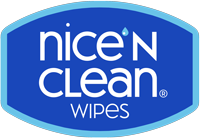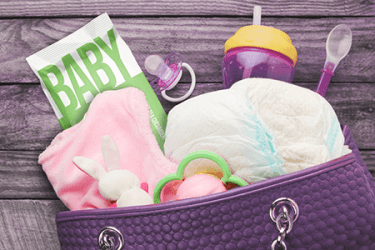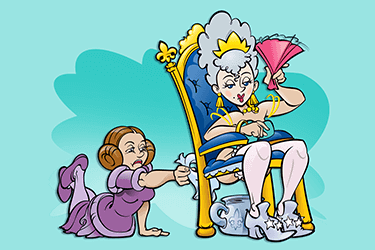How to Choose the Best Baby Wipes for your Child

As far as parenthood goes, it’s safe to say baby wipes are a game changer. The disposable wet wipes designed to make diaper changes easier and more convenient are considered a must-have for all parents. You definitely want to have them on hand when your cutie experiences their first blow-out. (Believe us… it’s not a matter of if, it's a matter of when.)
Baby wipes are not only great to have at home, they’re also an essential diaper bag item so diaper changes outside of the house are more convenient and less messy.
Nowadays, there are dozens of brands and types of baby wipes; so many that it may be a bit overwhelming to new parents. In this article, we’ll give you a crash course in all the types of baby wipes available so you can select the right one for your family’s needs.
But first, a quick history on baby wipes.
How Baby Wipes Were Invented
Prior to the invention of disposable baby wipes, parents used small pieces of reusable cloths that were soaked with water or a cleaning solution. As you can imagine, scrubbing and washing them daily could be quite tedious, messy, and unpleasant.
The first wet wipe was pioneered in the 1950s by Arthur Julius. He came up with the innovative idea that a disposable wet napkin could be an ideal and convenient delivery system for cleaning and hygiene. He created the Wet-Nap® wipe in 1957 in his Manhattan, NY loft, trademarked it in 1958, and unveiled his invention at the 1960 National Restaurant Show in Chicago, IL. Three years later, Wet-Nap® wipes were being distributed to customers at Kentucky Fried Chicken restaurants.
Arthur’s company, Nice-Pak Products, Inc., is now the world’s leading producer of wet wipes. Over the years, wet wipes evolved for different purposes. Baby wipes are wet wipes that are specially designed for infant skin. The family-owned company is one of the first companies to produce baby wipes and it’s available under the Nice 'N CLEAN® brand.
What are the Benefits of Disposable Baby Wipes?
Disposable baby wipes are a popular choice among parents and caregivers because of their many benefits:
- Convenient. Baby wipes make diaper changes easier at home and more convenient on the road. After being used, they can be thrown out instead of having to be scrubbed and washed.
- Portable. Baby wipes are available in small packs that are easy to throw into a purse or diaper bag. So no matter where a diaper blowout occurs, you’ll be prepared for the clean-up.
- Made for baby skin. Baby wipes are specially formulated for baby skin. They have no harsh irritants or anything that could irritate your child’s skin.
Types of Baby Wipes
The baby wipes market has no shortage of options. The most popular offerings are scented, unscented, and sensitive. In addition to these 3 types, features to consider are: how thick they are, how easily they tear, how absorbent they are, how stretchy they are, and how soft they are.
Scented
Scented baby wipes have a lovely fragrance to cover the odor of the smelly stuff they’re designed to clean off. As long as your baby doesn’t have any sensitivities to fragrance, these are a good option. The first time you buy a new pack of scented wipes, buy the smallest pack available to make sure they don’t irritate your child.
Unscented
Unscented baby wipes are not always sensitive wipes, but sensitive wipes are always unscented. That’s because unscented wipes may contain alcohol or other ingredients that may be problematic for babies with skin sensitivities. Unscented simply means there is no added fragrance.
Sensitive
Sensitive baby wipes are unscented (fragrance-free) and alcohol-free. These are ideal if your baby has any skin issues like eczema or rashes.
What are Baby Wipes Made Of?
In a nutshell, a baby wipe is made of the wipe itself and the cleansing solution. The cloth of the wipe can vary by manufacturer, but in general, it’s made of “non-woven fiber.” In light of growing interest and emphasis on sustainability, an increasing number of manufacturers are offering plant-based wipes. Plant-based wipes can be made with cotton, bamboo, or rayon.
For the cleansing solution, common ingredients in baby wipes include:
- Water
- Detergents
- Moisturizing agents
- Aloe vera
- Fragrances
- Preservatives
When shopping for baby wipes, here are ingredients you’ll want to look out for and avoid:
- Parabens: Examples of parabens include methylparaben, propylparaben, and ethylparaben. They are commonly found in personal care products and have been linked to cancer [*].
- Phthalates: This family of chemicals is typically added to plastics to make them soft and easier to mold. It is also an ingredient which is commonly used for fragrance in a product. It does not have to be listed as an ingredient since fragrance can be considered a trade secret. Phthalates are “endocrine disruptors,” and are linked to disrupting hormones (especially in boys and men), lowered fertility, and some cancers [*].
- Benzyl alcohol: Used as a preservative, benzyl alcohol can be a skin irritant.
- Foaming agents: These can strip the skin of its protective layer. Examples of a foaming agent commonly found in baby soaps and shampoos is Sodium Lauryl Sulfate (SLS) and Sodium Laureth Sulfate [*]. These are now rarely used in baby wipes, but should also be avoided when shopping for other baby cleansing products.
- Preservatives: Methylisothiazolinone (MIT or MI) is a preservative used in wet wipes to help prevent bacterial contamination. MI has been linked to rashes, skin irritation and other allergic reactions, such as hand dermatitis [*][*].
- Propylene glycol or polyethylene glycol (PEG): These are petroleum-based mineral oils that are added to help other ingredients penetrate more deeply into the skin. They may cause skin irritation or allergic reactions [*].
What are the Best Baby Wipe Brands?
The best baby wipe brand is dependent on your unique individual needs. You probably already know about top mainstream brands like Pampers and Huggies, but there are many others worth considering.
A growing commitment to sustainability means more plant-based wipes are available. Nice 'N CLEAN® Wipes are an example of a brand that uses purified water and natural ingredients, and is made with sustainably sourced renewable plant-based fibers.
How to Choose the Best Baby Wipe for your Child
With so many varieties of baby wipes available, it can be overwhelming when trying to figure out which baby wipe is best. When selecting a baby wipe, think about the following:
- Convenience: While reusable cloths are more cost effective in the long run, ask yourself if you really have the time and energy to scrub and wash soiled pieces of cloth on a daily basis. It’s totally okay if that’s not up your alley! Most parents prefer disposable baby wipes because they’re easier, more convenient, and affordable. Also, they can be more sanitary since you throw them out immediately after use.
- Cost: When looking at prices, you’ll want to think about the cost per wipe as well as the total cost. You can buy baby wipes in single packs, multi-packs, and in bulk. In general, the more wipes you buy at a time, the lower the cost per wipe. However, you don’t want to go all in on a bulk package to maximize value while waiting for your baby’s arrival. You never know how your child will respond to a brand of wipes so it’s a good idea to buy two or three small packs of various brands to try out first.
- Packaging: Where do you plan to use baby wipes? At home is obvious, but what about at the grocery store, at a restaurant, at the park, at an airport, or on a road trip? The most convenient and versatile packaging option is a flexible plastic bag with either a sticker top or rigid flip-up top. These can be used at home and are easy to throw into a diaper bag, backpack, or purse for any trips outside of the house.
- Features: Think about the texture and material you prefer - thick or thin, stretchy, soft? Scented or unscented? Regular or sensitive? Unscented or fragrance-free (unscented means it has no smell; it doesn’t necessarily mean it’s free of fragrances).
- Ingredients: As mentioned above, be sure to read the ingredients so you know what’s in the baby wipes.
- Sustainability: Pick a wipe that’s made from plant-based fibers. Sustainable plastic-free wipes like Nice 'N CLEAN® Wipes are better for the environment because they’re made from a renewable resource. Avoid baby wipes that contain plastic.
Where to Buy Baby Wipes
Pretty much every major retailer carries baby wipes, such as Target and Walmart. The assortment varies by brand and pack sizes. For example, drugstores like CVS and Walgreens are more likely to carry smaller individual packs while club stores like Costco and Sam’s Club offer massive bulk bundles. You can also buy wipes online from a company website or on Amazon and have them shipped to your door. Some brick and mortar retailers and online stores also offer monthly subscriptions so you never have to worry about running out of wipes. You can order them to be delivered to you as often as you’d like.
Baby Wipes are Must-Haves
Have we convinced you that baby wipes are a must-have? Make sure you’re aware of the features and ingredients when selecting the best wipe for your family’s needs.




